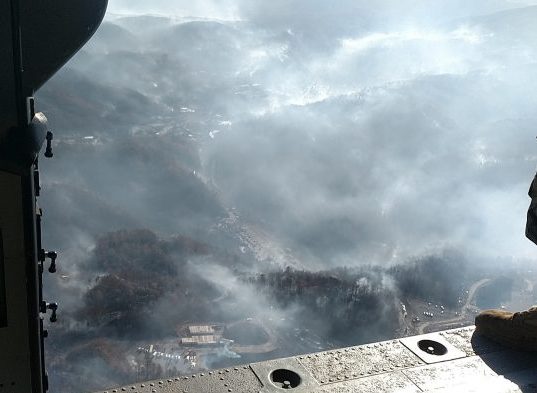Extreme Weather Lessons Begin Early These Days
After having lived in Nashville for more than six years, I am no stranger to major storms – hail storms, catastrophic rain and flooding (19 inches in 2 days), wind storms, and tornadoes. I’ll admit that I grew up in the Arizona desert, so have had to be storm trained on what to do when […]

After having lived in Nashville for more than six years, I am no stranger to major storms – hail storms, catastrophic rain and flooding (19 inches in 2 days), wind storms, and tornadoes. I’ll admit that I grew up in the Arizona desert, so have had to be storm trained on what to do when the sirens go off, where is the safest place in my house, and how to keep a sump pump running for days on end. You all are likely far more storm savvy than I am, but I think I am getting there. And, if you need advice on how to survive a scorpion bite, I can definitely help.
About midnight one night last week the wind and rain started to pelt our home and my family was awoken by the sound of the trees creaking. Somewhere around one in the morning, the tornado warning sirens began to blare (a tornado warning means that a tornado has been sighted or been picked up by radar). We gathered up some blankets and pillows, and headed down to our home office, our pre-designated shelter area. My role was to keep our two children quiet and resting while my husband tuned into the National Weather Service and our local radio station for updates.
We could see on the computer screen the large RED stretch of the storm coming in from the west, moving over Nashville and heading out to eastern Tennessee. All totaled, I think we stayed in the office for an hour, and once the sirens silenced, we wearily trudged back upstairs and off to bed.
As someone who has been active in the disaster space for well over a decade, I have had many opportunities to think about the personal preparedness aspects associated with disasters. We have flashlights, candles, matches, water, radios, and other sundry items located in two places in our home. We have flares in our car, and well, we do our best. But I had no idea that speaking to a six year old about disasters and weather would be so revealing.
Innocently enough, I asked my older child what she was studying in her first grade science class. She replied, “extreme weather.” Well, I thought, how exciting is that! I probed further and she explained that she and her class were learning about blizzards, thunderstorms and hurricanes and what characterizes them as extreme. We talked for several minutes about what is extreme weather and then she showed me two worksheets (see below) that delve into the idea of a tornado, danger, hurricane, and extreme (please don’t mind the handwriting, good penmanship does not run in the family).
 While she may remember jumping through puddles following some of Tennessee’s recent storms, bringing weather (extreme weather no less) into the framework of science was so revealing for my first grader – and learning through her eyes helps me recommit to the work here at CDP. Helping donors be more effective, helping the humanitarian assistance community share their work with philanthropy, and thinking about how education plays a role in our discussions about mitigation, preparedness, relief, and recovery. And this education starts so young…
While she may remember jumping through puddles following some of Tennessee’s recent storms, bringing weather (extreme weather no less) into the framework of science was so revealing for my first grader – and learning through her eyes helps me recommit to the work here at CDP. Helping donors be more effective, helping the humanitarian assistance community share their work with philanthropy, and thinking about how education plays a role in our discussions about mitigation, preparedness, relief, and recovery. And this education starts so young…
More like this

